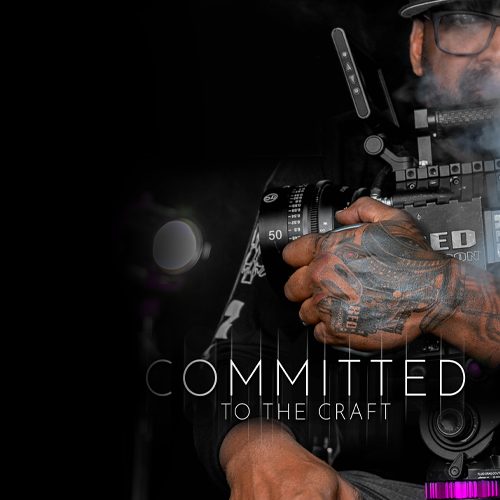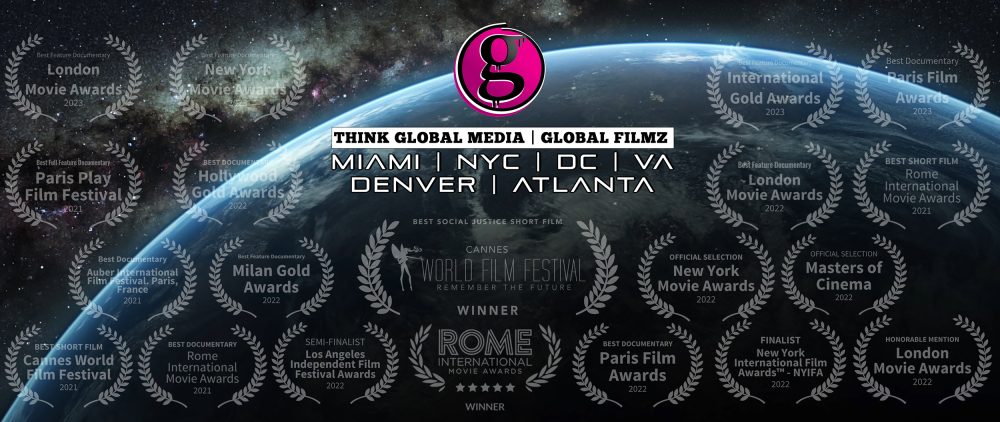
A Step-by-Step Guide on How To Produce a Docuseries
A Step-by-Step Guide on How To Produce a Docuseries
Docuseries have become increasingly popular in the world of film and television, offering an in-depth exploration of real-life stories and issues across multiple episodes. Producing a docuseries is a complex and rewarding endeavor, requiring careful planning, research, and storytelling skills. In this article, we will guide you through the steps to produce an engaging and thought-provoking docuseries from concept development to the final product.
1. Conceptualization and Research
The first step in producing a docuseries is to conceive your concept and conduct thorough research:
a. Choose a Compelling Topic: Select a subject matter that you are passionate about and that aligns with your filmmaking goals. It should be a topic that has enough depth and breadth to sustain multiple episodes.
b. In-Depth Research: Dive deep into your chosen subject matter. Read books, articles, and watch related documentaries to gain a comprehensive understanding of the topic.
c. Unique Perspective: Identify what unique angle or perspective you can bring to the subject matter. What makes your docuseries distinct from others exploring similar themes?
 2. Pre-production Planning
2. Pre-production Planning
During the pre-production phase, you will lay the foundation for your docuseries:
a. Production Plan: Develop a comprehensive plan outlining the scope, budget, and timeline for your docuseries. This includes budgeting for equipment, locations, travel, and other expenses.
b. Assemble Your Team: Identify and recruit key members of your production team, including a director, producer, cinematographers, sound engineers, and editors, depending on the scale of your project.
c. Secure Funding: Determine your budget and explore various funding options, such as grants, investors, crowdfunding, or personal savings.
d. Location Scouting: Visit and assess locations where you will be filming episodes to ensure they are suitable for your project.
e. Legal Considerations: Address legal aspects, such as acquiring necessary permissions, releases, and contracts for interviews, locations, and copyrighted materials.
3. Episode Planning
Each episode of your docuseries should be a compelling story on its own while contributing to the overall narrative:
a. Episode Outlines: Develop detailed outlines for each episode, specifying key events, interviews, and themes that will be covered.
b. Interview Scheduling: Plan and schedule interviews with relevant subjects and experts, ensuring they provide valuable insights and information.
c. Visual Aids: Consider the visual elements, such as B-roll footage, archival materials, animations, and graphics, that can enhance storytelling.
 4. Filming
4. Filming
During the production phase, you capture the footage required for your docuseries:
a. Gather Footage: Shoot the interviews, scenes, and B-roll footage as outlined in your episode outlines. Utilize high-quality equipment, including cameras, sound recording devices, and lighting equipment.
b. Conduct Interviews: Interview subjects and experts, asking insightful and open-ended questions to elicit meaningful responses.
c. B-roll Footage: Capture supplementary footage, known as B-roll, that visually supports the narrative of each episode.
d. Adaptability: Be prepared to adapt to changing events or developments during filming. Docuseries often require flexibility to incorporate unexpected twists and turns.
5. Post-production Editing
In the post-production phase, you weave together the elements of your docuseries:
a. Review Footage: Carefully review and select the most relevant and compelling clips for each episode.
b. Episode Editing: Edit the footage, organizing it according to your episode outlines. Incorporate interviews, B-roll, narration, and other elements to construct a coherent and engaging narrative.
c. Sound and Music: Enhance audio quality and integrate background music that complements the mood and tone of each episode.
d. Visual Enhancements: Utilize color correction and visual effects to improve the overall visual quality of your docuseries.
e. Fine-tuning: Continuously refine the edit to create a series that is compelling, emotionally resonant, and thought-provoking.
6. Series Structure and Flow
While each episode should stand on its own, the docuseries as a whole must have a cohesive structure and narrative flow:
a. Create a Series Outline: Develop a clear overarching structure for your docuseries, indicating how episodes relate to each other and contribute to the overall narrative.
b. Transitions and Story Arcs: Ensure smooth transitions between episodes, maintaining consistent themes, characters, and story arcs throughout the series.
7. Review and Feedback
Before finalizing your docuseries, seek feedback:
a. Test Screenings: Share your docuseries episodes with a diverse audience to gather input and feedback.
b. Incorporate Feedback: Use the feedback to make necessary adjustments and improvements, ensuring that your docuseries resonates with your target audience.
 8. Distribution and Promotion
8. Distribution and Promotion
Once your docuseries is complete, it’s time to share it with the world:
a. Film Festivals: Consider submitting your docuseries to relevant film festivals that match your subject matter or style.
b. Distribution Platforms: Decide how and where you will release your docuseries, whether through streaming platforms, television networks, or other distribution channels.
c. Marketing and Promotion: Develop a marketing strategy to create awareness, reach your target audience, and promote your docuseries through various means, including social media, press releases, and public relations.
Producing a docuseries is a multifaceted and intricate process that demands meticulous planning, dedication, and creative storytelling. By following the steps outlined in this guide, from conceptualization to distribution, you can produce a docuseries that engages, informs, and inspires your audience while effectively conveying your unique perspective and storytelling vision. Each step plays a crucial role in crafting a captivating and memorable docuseries that can make a lasting impact in the world of documentary filmmaking.
NARRATIVE FILM REEL
GLOBAL FILMZ EVOLUTION (2017 – 2022) REEL
MUSIC VIDEO PRODUCTION
MUSICAL ARTISTS LOOKING TO PRODUCE A MUSIC VIDEO? WE ARE A MIAMI BASED FULL SERVICE VIDEO PRODUCTION COMPANY, EQUIPPED WITH STATE OF THE ART SMART STUDIO / FILM SETS WHICH ARE PERFECT FOR CREATING A CONTROLLED ENVIRONMENT WHEN NECESSARY OR OUR FILM CREW CAN TAKE THE PRODUCTION TO THE STREETS/BEACHES OF MIAMI.
More Music Videos…(Click here)
Corporate Video Production
IN NEED OF PROMOTIONAL VIDEOS FOR YOUR BUSINESS? WE CAN HELP YOU SHAPE YOUR DIGITAL MARKETING STRATEGY BY INTEGRATING HIGH QUALITY, PROFESSIONAL CORPORATE VIDEOS.
More Corporate Videos…(Click here)
TV SHOW PRODUCTIONS
SITCOMS
DOCU-SERIES
HIDDEN CAMERA SHOWS
Behind the Scenes
More Behind the Scenes…(Click here)




 2. Pre-production Planning
2. Pre-production Planning 4. Filming
4. Filming 8. Distribution and Promotion
8. Distribution and Promotion


